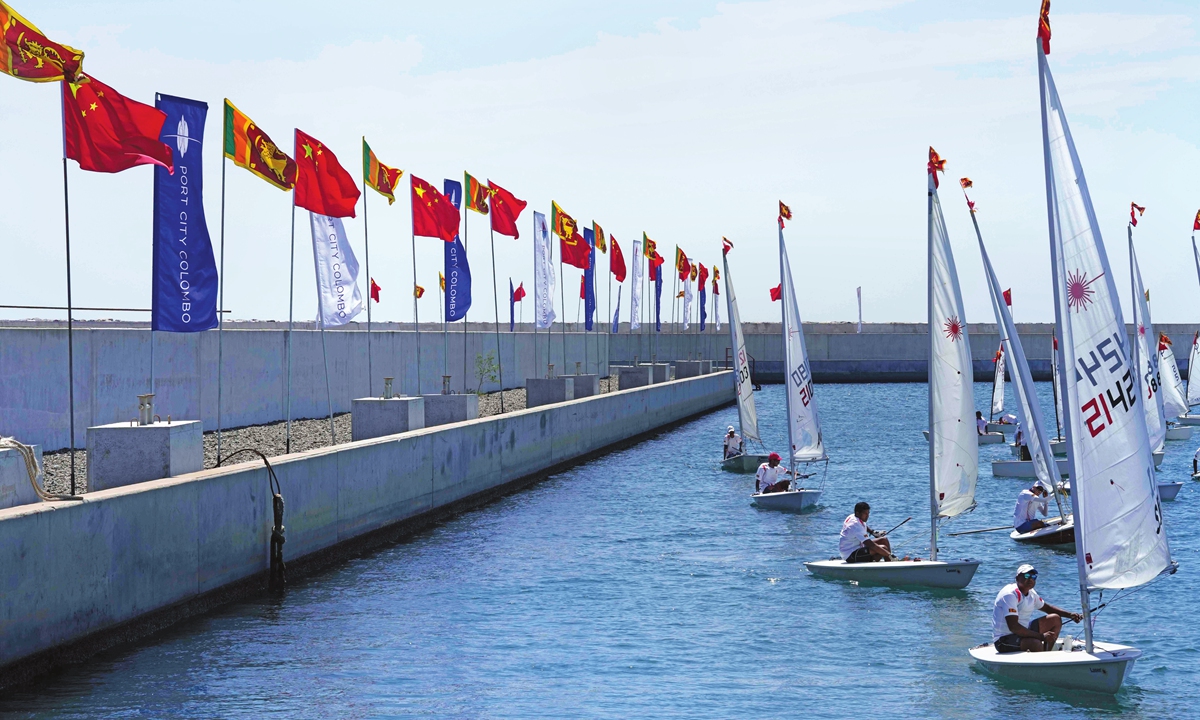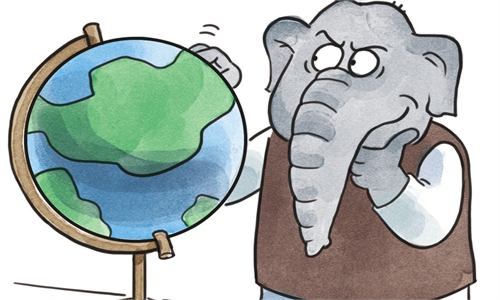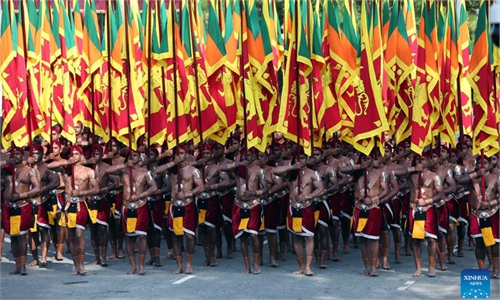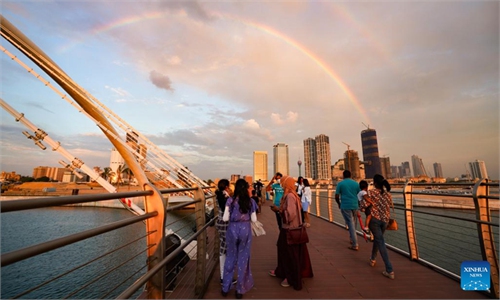Rumors behind ‘China debt trap’: How Western and Indian conspiracists smear China-Sri Lanka cooperation

Chinese and Sri Lankan national flags are seen at Colombo's Port City during the visit of Chinese State Councilor and Foreign Minister Wang Yi in Colombo, Sri Lanka, on January 9, 2022. Photo: VCG
After Sri Lanka declared an economic emergency and asked China for help at the beginning of the year, some Western and Indian conspiracists once again went on a bashing spree against China and its Belt and Road Initiative (BRI).
By maliciously tying Sri Lanka's recent financial distress to the Chinese investment in the country, they got busy hyping the so-called "Chinese debt trap" in an attempt to mislead the public and attack the China-Sri Lanka cooperation.
Some users created and spread rumors on social media in January that "China's central bank issued bank notes with a face value of 10,000 rupees in Sri Lanka," which was later refuted. This misinformation insinuates China's violation of Sri Lanka's currency sovereignty, smearing the mutually beneficial economic cooperation between the two sides as an "unequal plunder" by China, observers told the Global Times.
With either rumors about currency sovereignty or the so-called "China debt trap," some Western countries, led by the US, and India have been attacking China's overseas construction projects. However, their clichés have rarely been echoed in BRI countries, Chinese and Sri Lankan scholars said.
China is a good friend "with consistent economic policies, good trade practices and a win-win attitude," Samitha Hettige, advisor of the National Education Commission of Sri Lanka, mentioned in his article published in December on Sri Lanka's English-language newspaper, Ceylon Today. "Sri Lanka-China relations are quite strong, only based on friendship and nothing to do with [business or politics]," Hettige told the Global Times.
Disinformation campaign
The rumor about currency sovereignty went rife earlier in January, coinciding with Wang's visit to Sri Lanka. One of the earliest rumormongers was a Twitter user under the name "bandhini fernando" who frequently posts anti-China misinformation, the Global Times found. On January 9, "bandhini fernando" posted two fake pictures of "Sri Lanka's new 10,000 rupees note" saying it was issued by the People's Bank of China.
"Wang Yi officially handed over new currency to Sri Lanka during his meeting with [Sri Lankan] President," bandhini fernando wrote. The user claimed that the "new bank note" can be used in Sri Lanka and wickedly described the Chinese-invested projects of Colombo Port City and Hambantota Port as "Chinese territory."
The rumor was refuted the following day by Sri Lankan fact-checking agency Factcrescendo, which quoted a response by the Deputy Governor of the Central Bank of Sri Lanka, CJP Siriwardana, as saying that the bank currently has no plans to issue a 10,000 rupees bank note and the highest currency value in Sri Lanka remains 5,000 rupees.
The "China debt trap," an old accusation though, is another defamation campaign by the West and India against China-Sri Lanka's economic cooperation.The Chinese Ministry of Foreign Affairs responded by saying that the accusations are not true. "China-Sri Lanka cooperation is mutually beneficial and has been warmly welcomed by all sectors in Sri Lanka," said the ministry spokesperson Wang Wenbin on January 10.
There is no such thing as a "China debt trap," noted Hettige. "The total Chinese loans only account for a little more than 10 percent of our total loan property portfolio, and China is actually the fourth largest [creditor], behind international capital markets, multilateral development banks and Japan," he told the Global Times, highlighting that "the media did not show the fact."
US and India's role
The US and India play a major role in the slandering campaign against China-Sri Lanka cooperation and China-funded projects in the country, observers found.
"Sri Lanka has not fallen into a debt trap," President of Sri Lanka, Gotabaya Rajapaksa, once stressed in the presence of then US Secretary of State Mike Pompeo, as Sri Lanka's news site Ada Derana reported in October 2020. Readers often see mainstream American newspapers and magazines, including The New York Times, the Wall Street Journal, Foreign Policy and The Atlantic, publish articles blathering about the alleged "China debt trap." Responding to the smears and attacks, Rajapaksa said in an official statement in October 2020 that "constructing a port in Hambantota is an idea of Sri Lanka and not China's." He also added that the project has a vast potential for generating income and employment opportunities for his country.
"The US frequently defames China-invested projects in Sri Lanka, partly to hope that Sri Lanka will abandon [the BRI] and opt for the [aid plans] the US offers," said Qian Feng, Director of the Research Department of the National Strategy Institute at Tsinghua University.
"Some Indian government officials and reporters always regard South Asia as India's 'sphere of influence,' wary of the so-called 'outside forces' developing relations with other countries in the region," Qian said while highlighting that "with hostility toward China, they see China's cooperation with countries like Sri Lanka a weakening of India's power of influence there."




